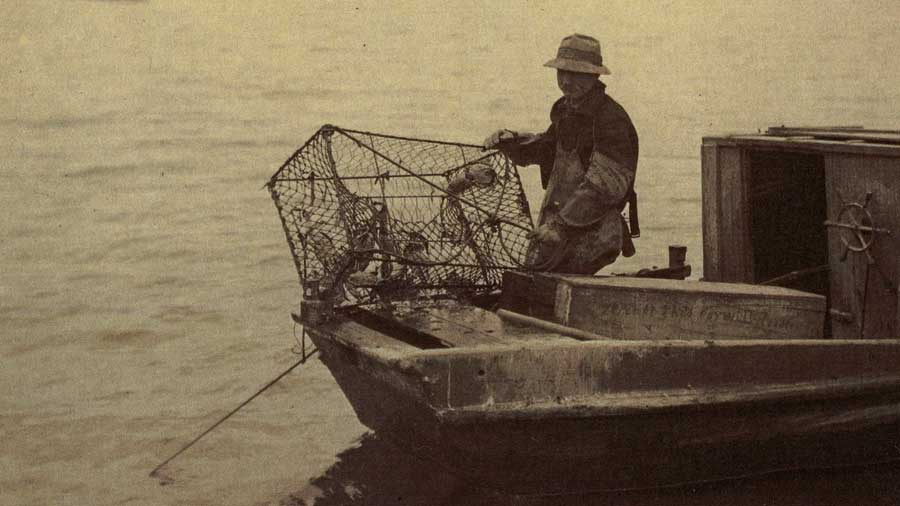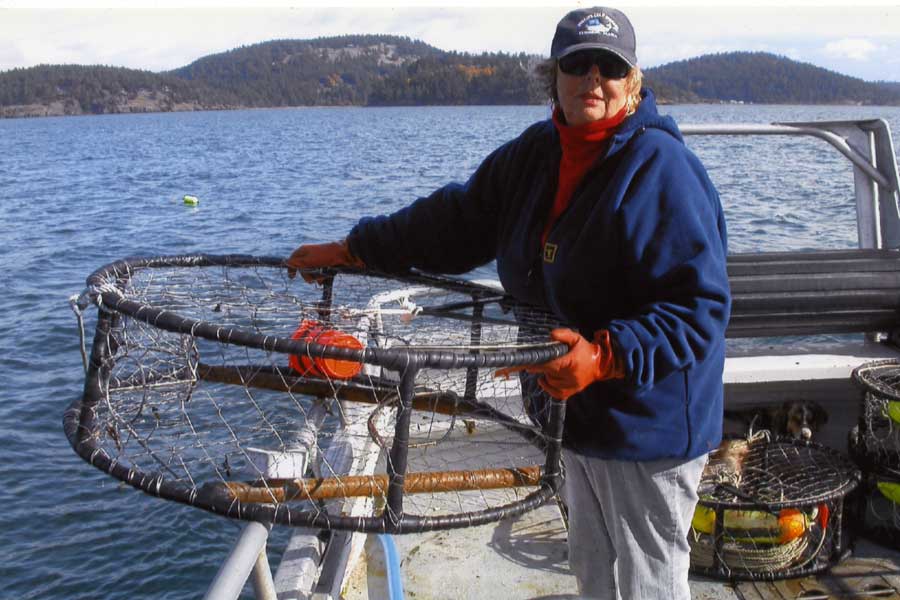To Market and Table
...At Home and Abroad
Local crabbing builds on tribal and immigrant traditions
Dungeness crab, found in commercial quantities from Alaska to central California, is one of the most popular items on West Coast dinner tables.
The species takes its name from a small fishing village on Washington's Strait of Juan de Fuca, where the first commercial shellfish operation on the North Pacific coast is believed to have begun.
Anacortes traces its local crabbing traditions to Coast Salish subsistence harvesting. Early immigrants supplied their families and nearby markets with crab. Today, recreational crabbing is highly popular. Commercial crabbers trap both Dungeness and Alaskan king crab, shipping them live to regional and worldwide markets.
Trading crab
For local Samish and Swinomish tribes, shellfish provide both a rich diet and a way to make a living. Their ancestors traded with other tribes and, after the 1850s, with newly arrived settlers. Canoeing to the shores of Fidalgo Bay, Indians traded handmade baskets of shellfish and berries for housewares and clothing.
Shipping crab on ice
Croatian immigrant Peter Babarovich was one of the first commercial crabbers in town, providing fresh crab for the Seattle market. He boiled his catch in an old drum on the beach, packed it in a crate with ice, and shipped it on the late train. By 1910, Anacortes was the principal supplier of crab to Seattle.
Night lights
In the early 1900s, large clams from March's Point across the bay were used for bait in crab pots. Since the best winter low tides for digging clams often occurred at night, lights from kerosene lanterns dotted the darkened bay as crabbers dug their bait. Later, canneries provided fishermen with fish heads and entrails for bait.
Crab shacks by the bay
Crab shacks lined the western shore of Cap Sante basin at the turn of the last century. There, fishermen kept crab fresh for up to a week in a "live box," awaiting a truck to Seattle. A good day's catch was five or six dozen. Several crab canneries operated between 1920 and 1949, spurring more crabbers to enter the market.







